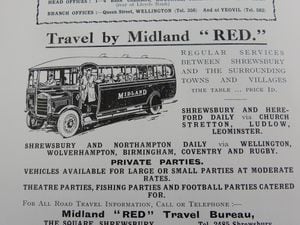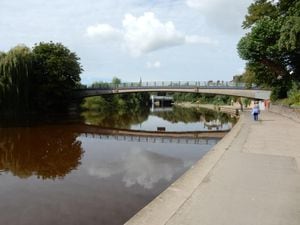Phil GIllam: All steamed up - but only in parallel universe
I’ve been searching high and low for my glasses, but I can’t find them for love nor money.

I expect they’ve been picked up by my smug doppelgänger in a parallel universe, and because of course my bifocals will be perfect for his vision, Carbon-copy Phil will simply assume they’re his.
Now, we all have our favourite take on the existence of parallel worlds. This has been a subject close to the hearts of many a science fiction writer for quite some time now.
According to the imaginations of some sci-fi novelists, it wouldn’t have just been myself and my wife who set off from our house on Sunday morning, hopeful of a pleasant few hours at the always-excellent Shrewsbury Steam Rally at Onslow Park.
No, indeed.
Light years away, somewhere the other side of a black hole, Carbon-copy Phil and the carbon-copy of my wife will also have set off from their carbon-copy home, heading for a carbon copy steam rally.
But, just to make it interesting, the world of science fiction allows for subtle differences in what happens next.
Thus, Carbon-copy Phil would not have encountered an enormous traffic jam stretching back miles along the A5. He and his wife would have got to the steam rally and had a lovely time.
Meanwhile, back on Earth, I’m afraid we just became exasperated with the delays, changed our minds about the rally, and went for a walk instead.
Ah, well. That's parallel universes for you.
Another of my favourite science fiction concepts is that of time travel.
Give me the Doctor’s Tardis and I’d be off like a shot.
You see, for one thing: I love old cars, old trains, old buildings, old bridges. And I’d love to walk the streets of Shrewsbury in Victorian times or in the 1920s or in the 1930s (preferably before war broke out).
The lovely advertisement for Midland Red buses pictured above is from 1933, and it sets my imagination racing.
What would it have been like to jump on a bus back then and, for example, to watch the world go by between one of the outlying suburbs and the town centre?
For one thing, you wouldn’t have needed, in 1933, to go to a steam engine rally to see traction engines and pristine-condition Austin Sevens and Vauxhall Cadets. You might have spotted all these between Castlefields and Smithfield Road!
As for the dear old Midland Red bus company, now just a memory, it loomed large in my 1960s childhood and 1970s teenage-hood. Ah, the smell of those diesel fumes! Those funny little tickets. The cheery drivers! Mmmmm.
For years I would catch the S12 service from North Street, just a few yards from our house, into town.
It seems quite incredible to me now that a full-sized bus (not one of these modern mini-buses you see today) could actually navigate its way around those narrow Victorian streets with cars parked everywhere.
Now, I must admit I would have been hard-pressed to say when the Midland Red vanished from our streets - so I did a little research.
With its origins at the dawn of the 20th century, the Birmingham & Midland Motor Omnibus Company gradually bought up other companies, growing as it did so. By the 1920s, what was now known as the Midland Red started express services to places like Weston-Super-Mare and Llandudno.
Big changes in transport came after World War II and Midland Red became 50 per cent state owned.
In 1969 it became the largest subsidiary of the National Bus Company.
There was rebranding from 1977 with local area names coming in – Chaserider (for Stafford and Cannock), Mercian (for Tamworth and Lichfield), Tellus (for Telford), and a whole host of others including of course Hotspur (for Shrewsbury and Ludlow). In 1981, the mother company of Midland Red was broken up into six companies, and then these were sold as part of the privatisation of the National Bus Company.
Ah. Where’s that time machine when you need it?





